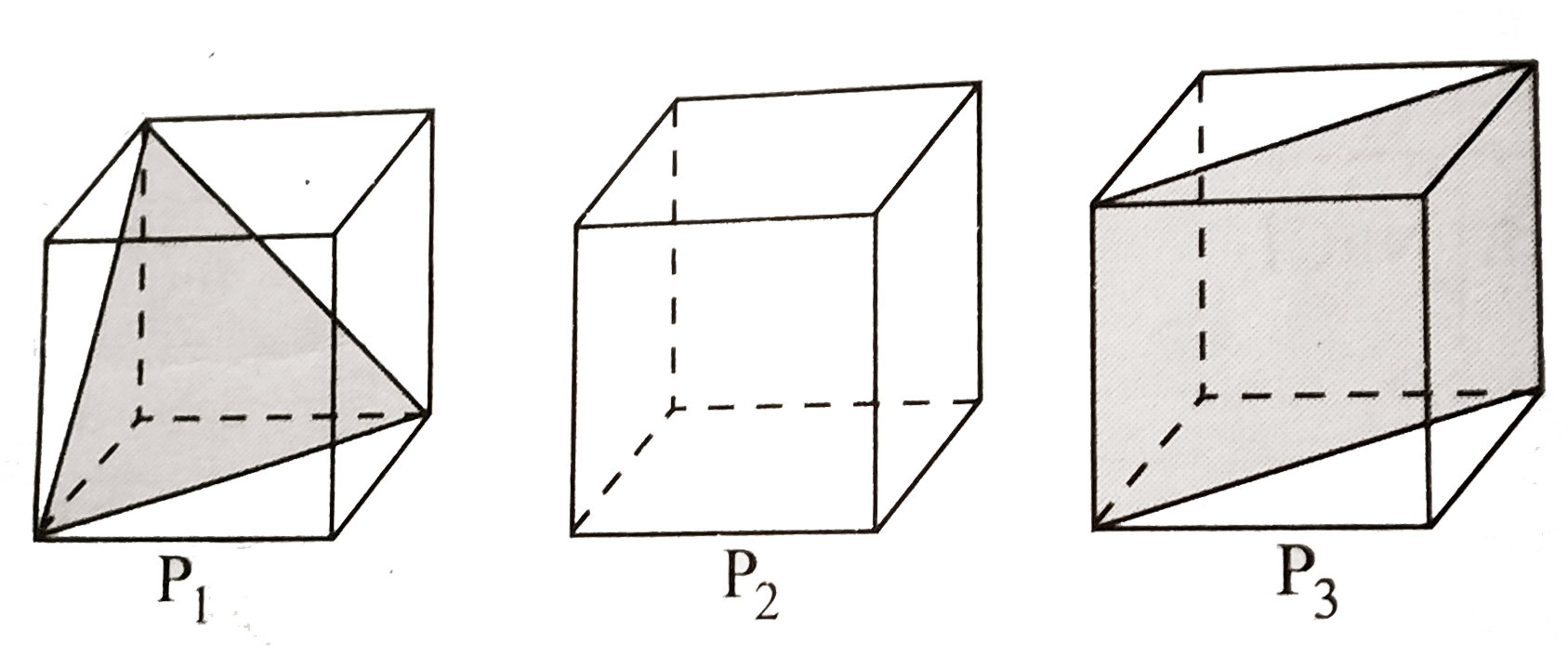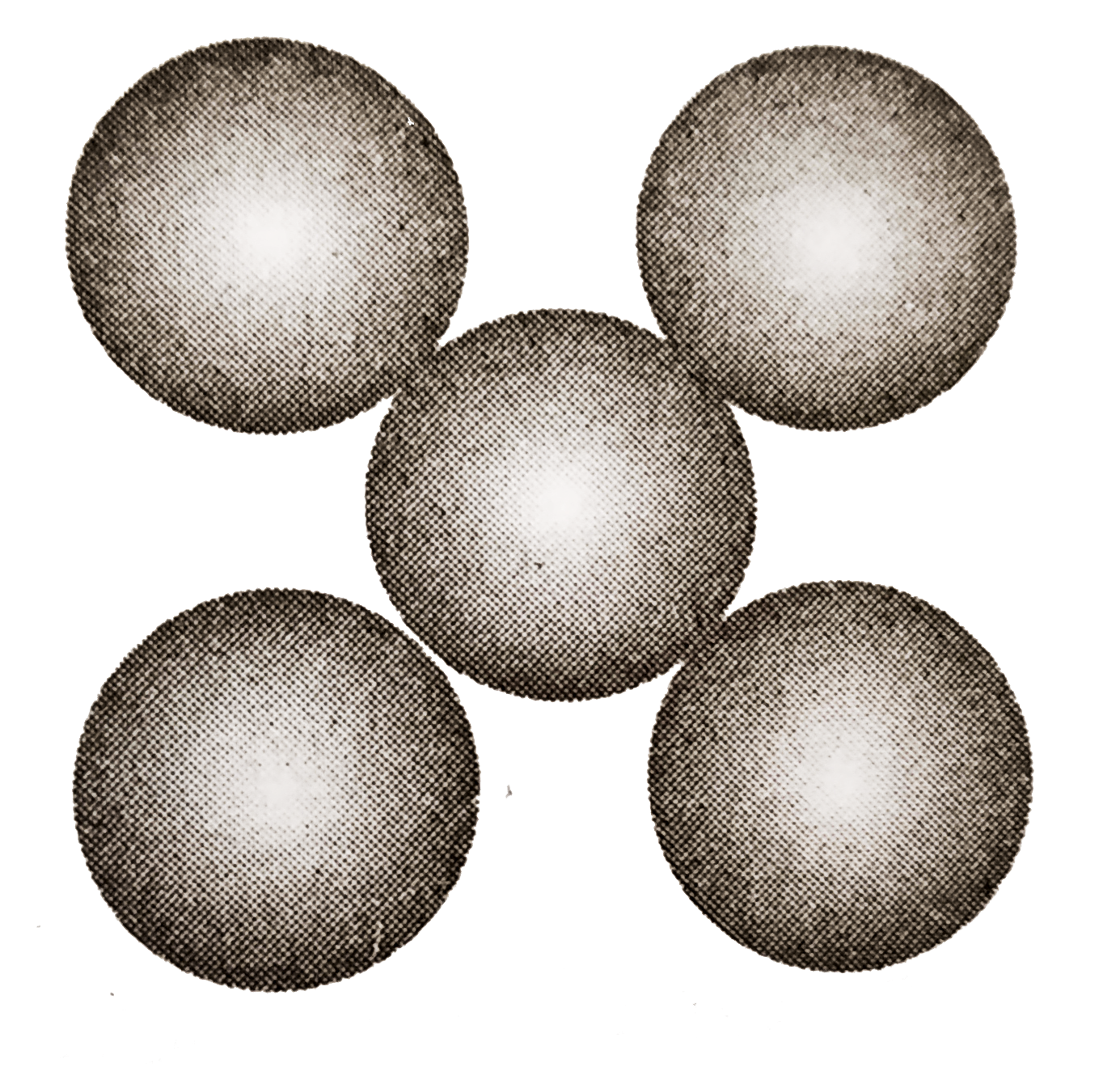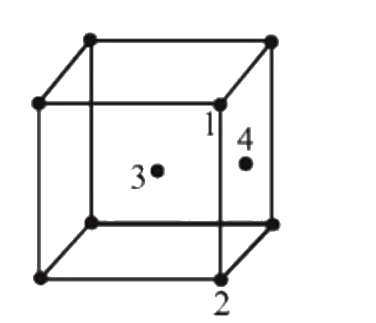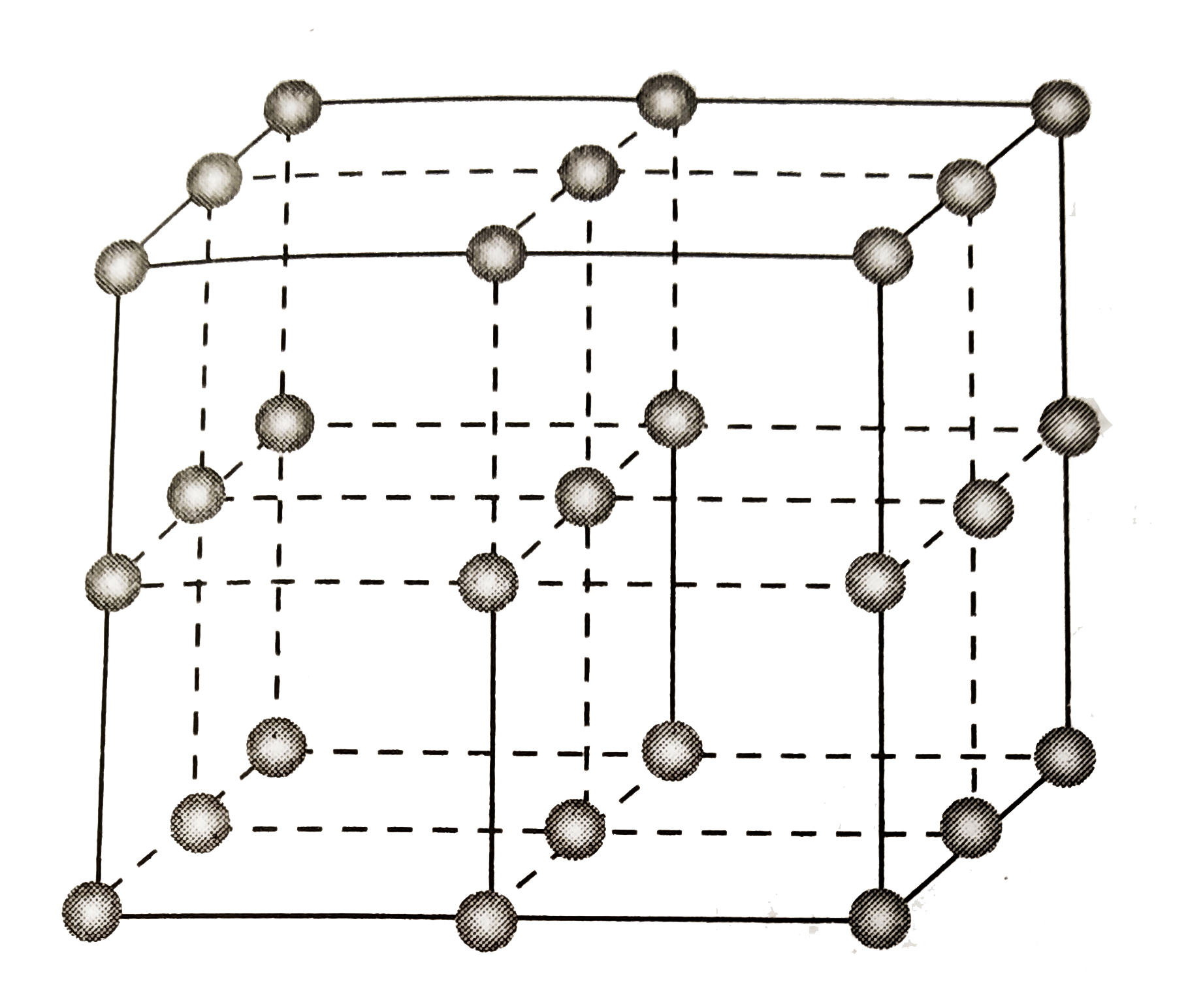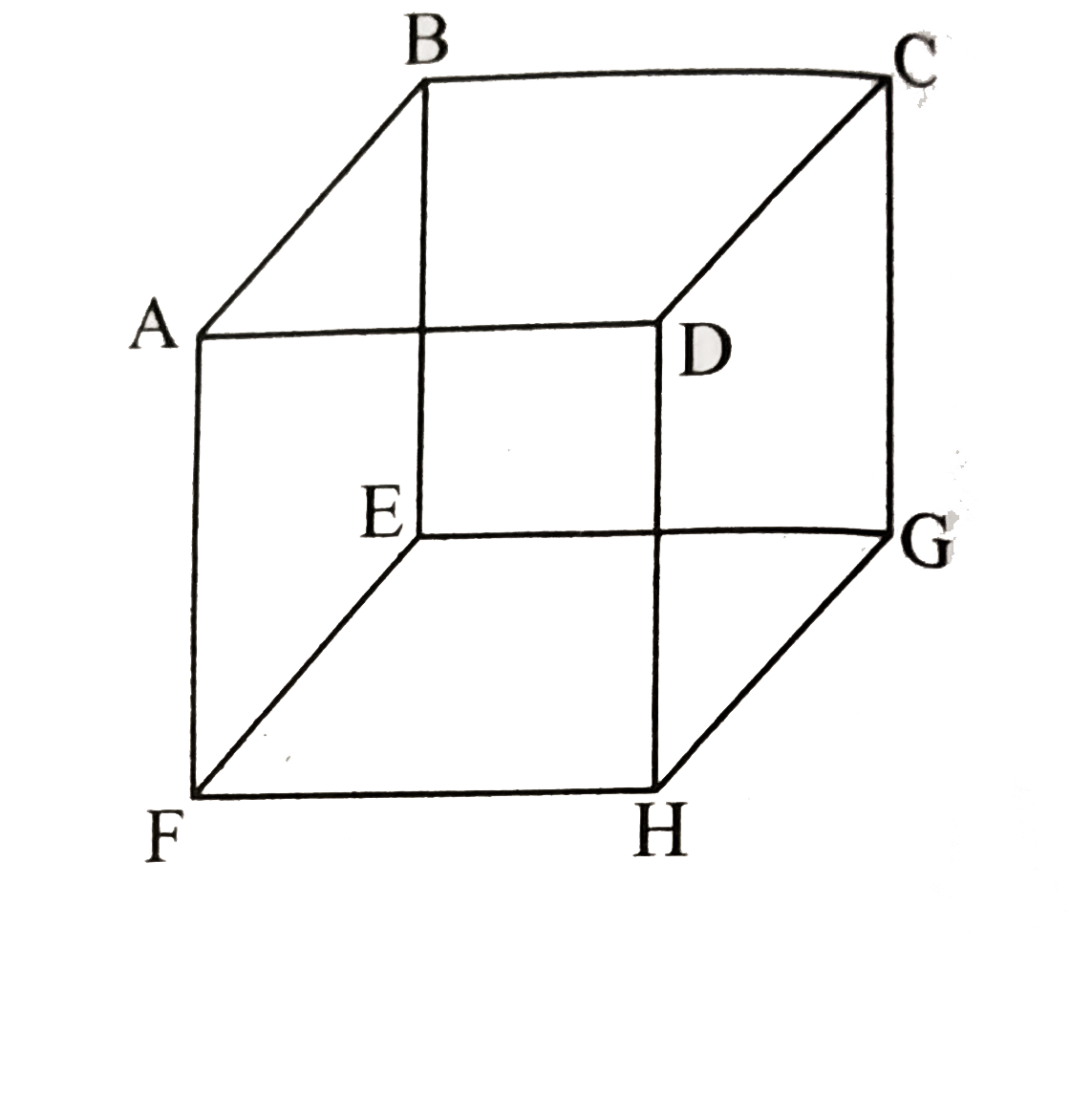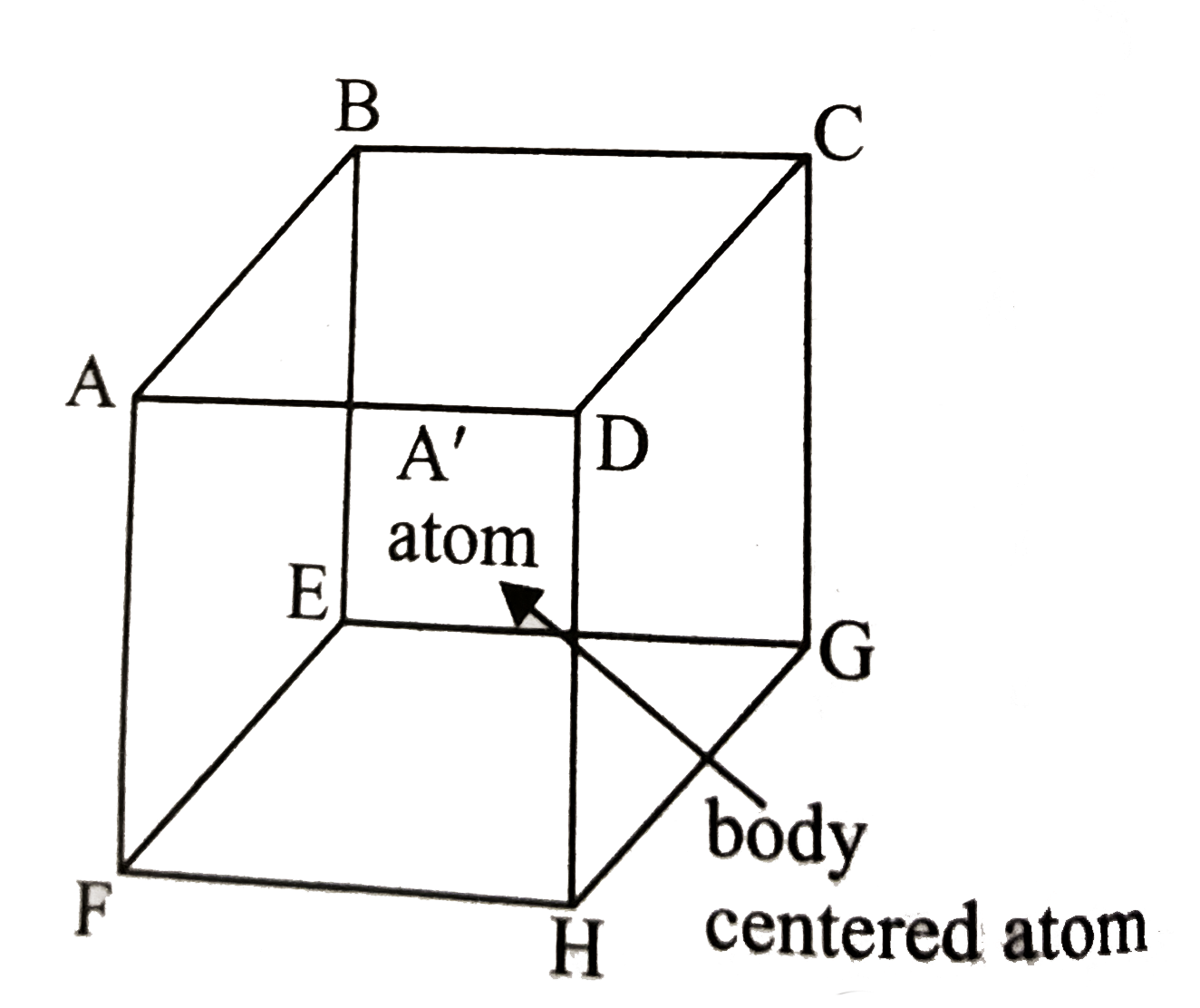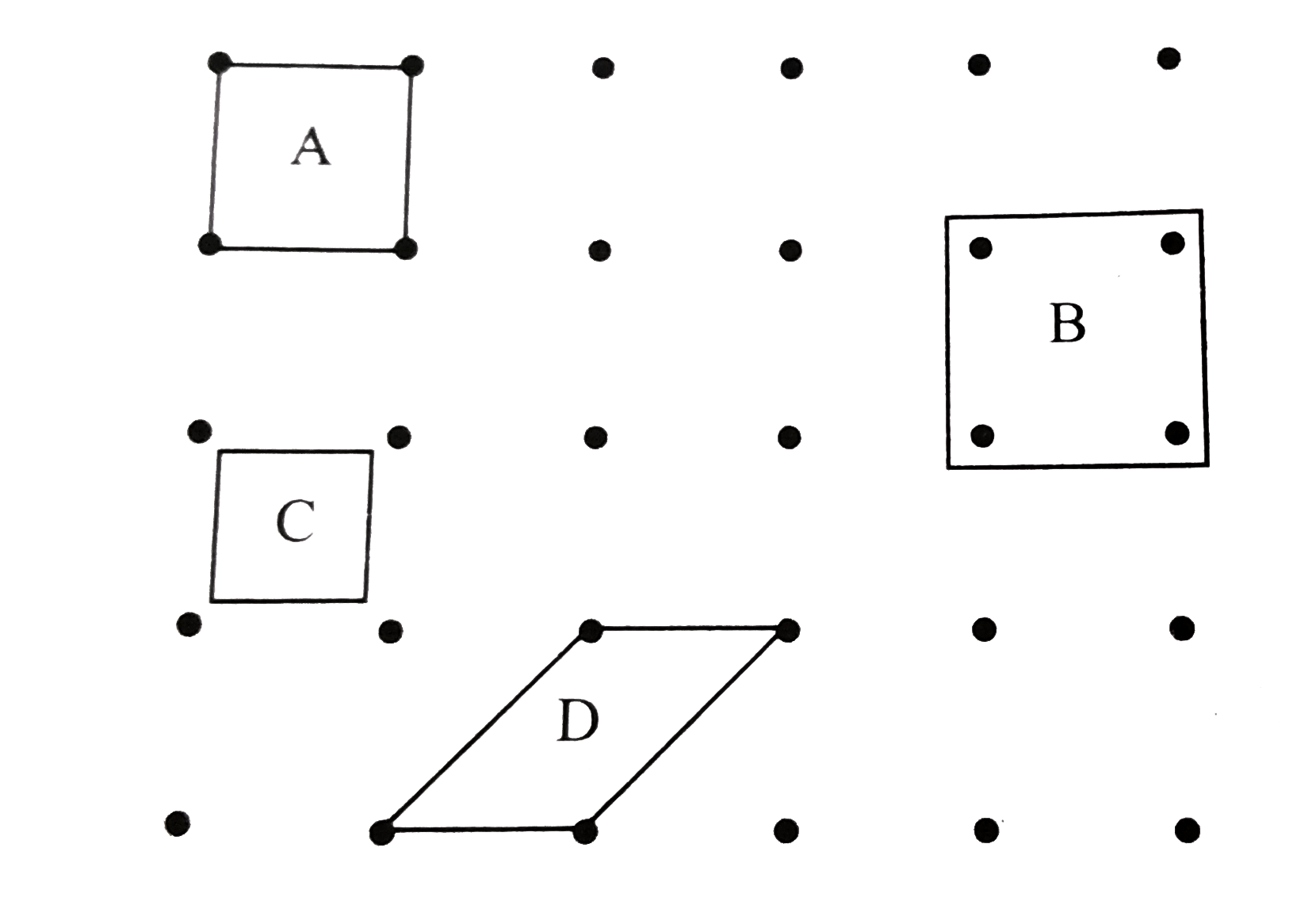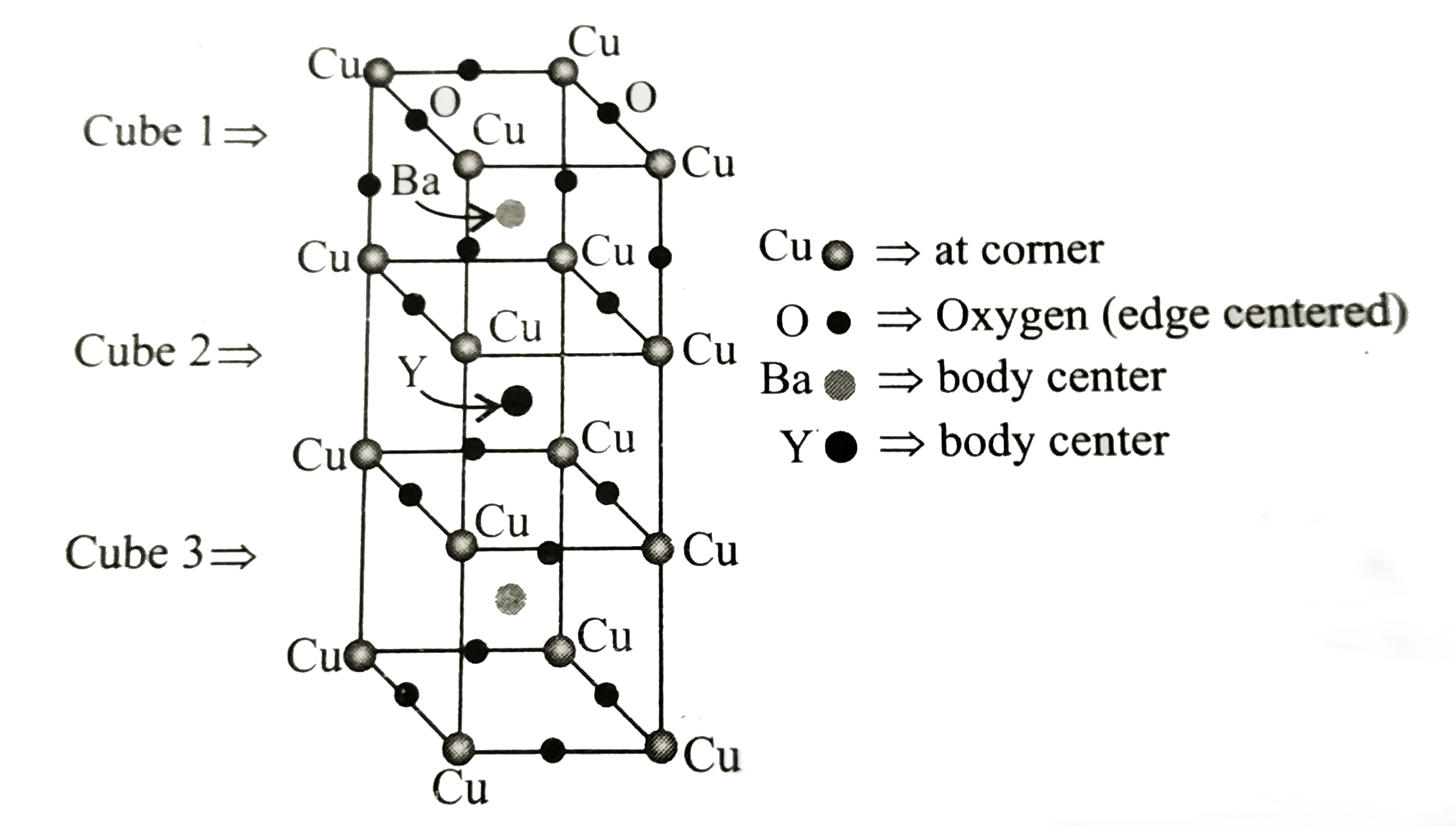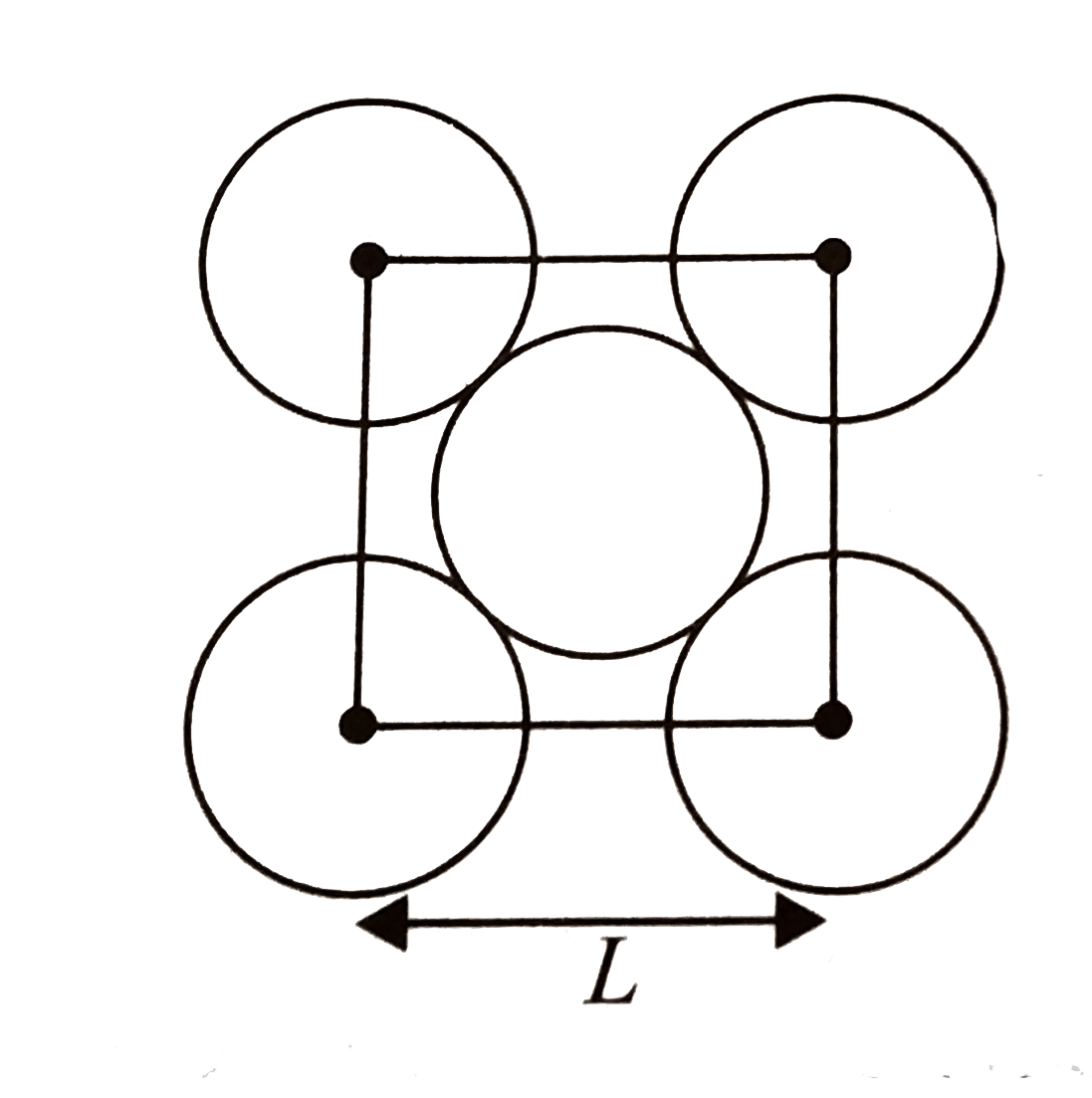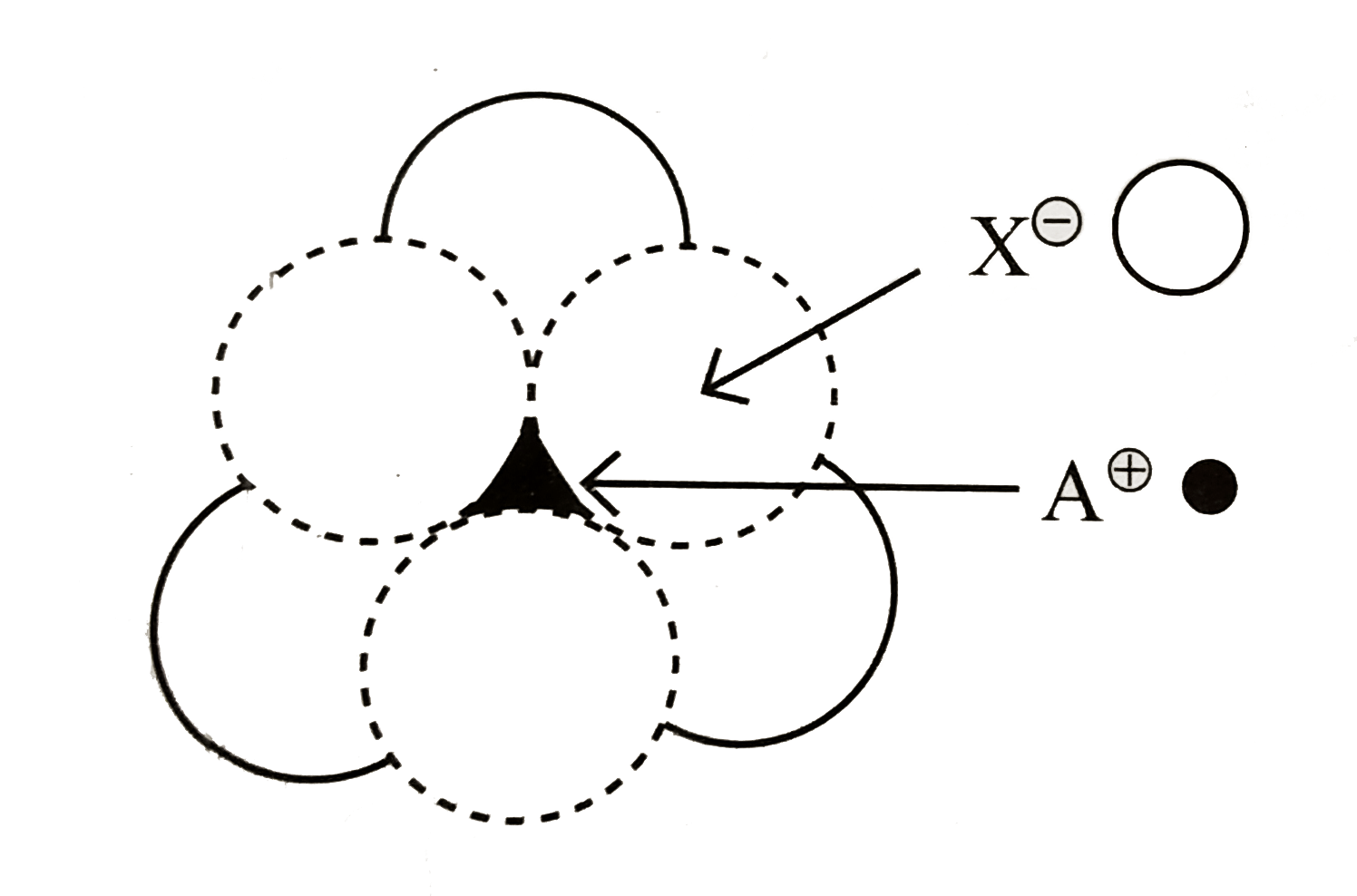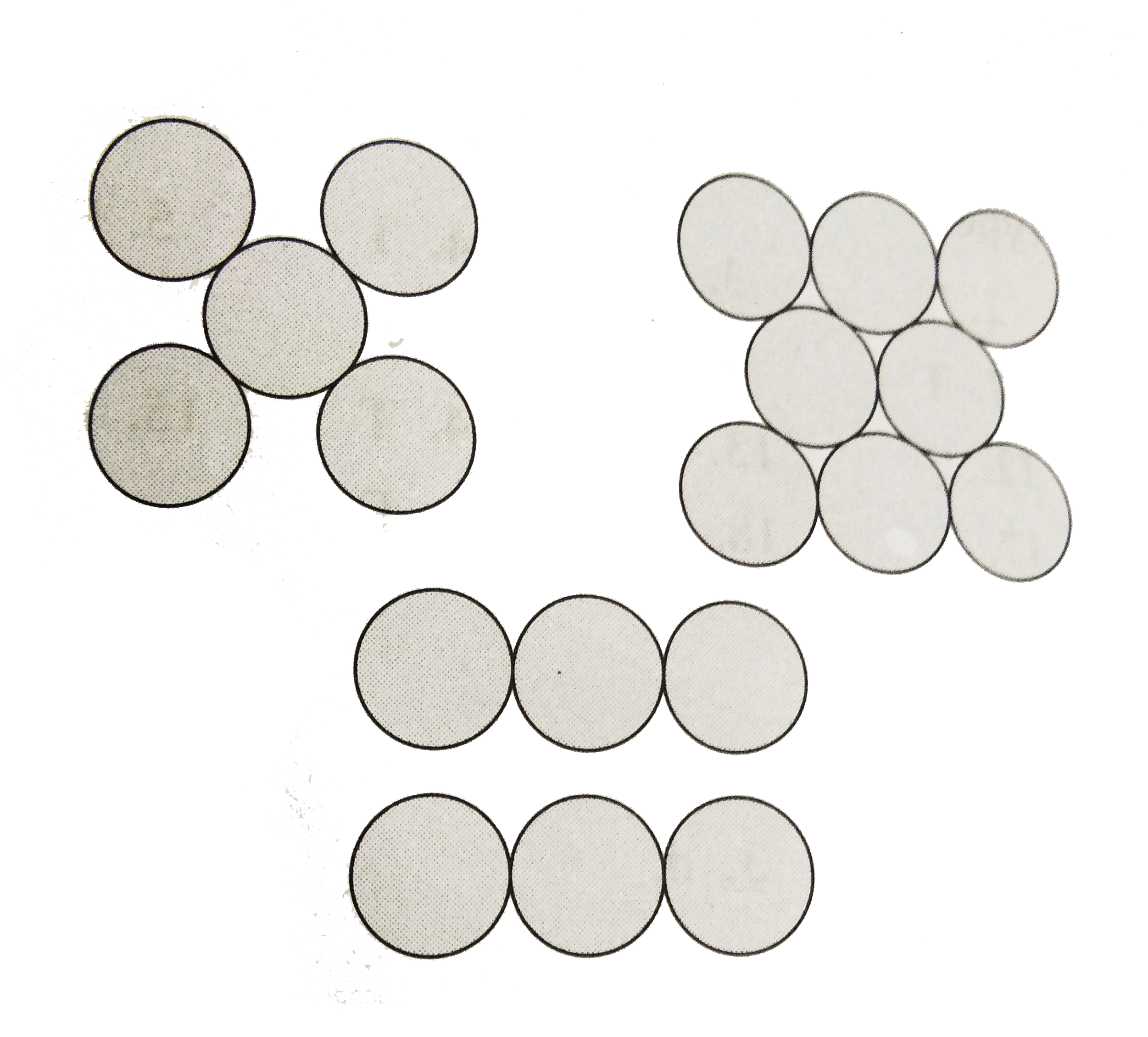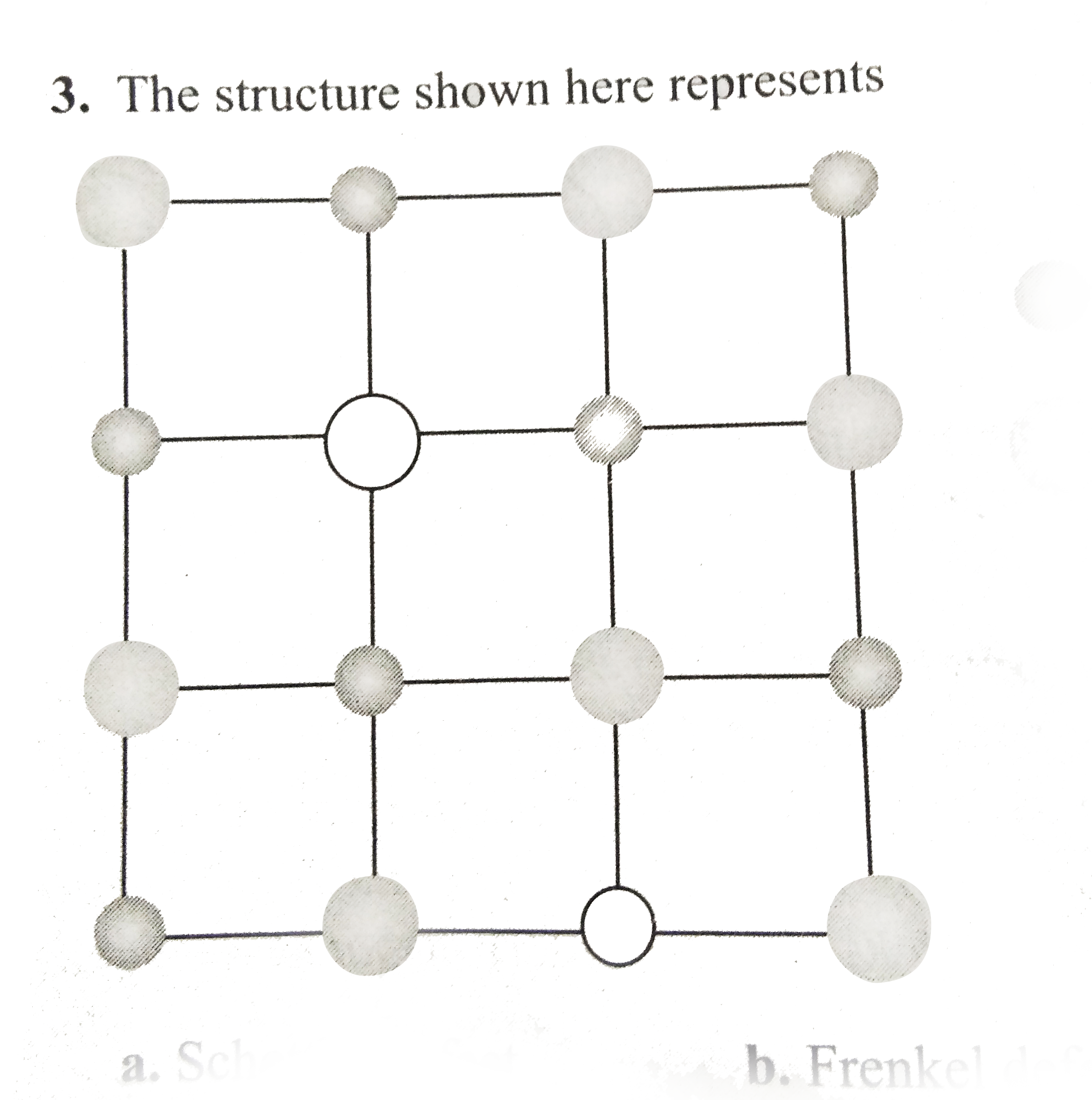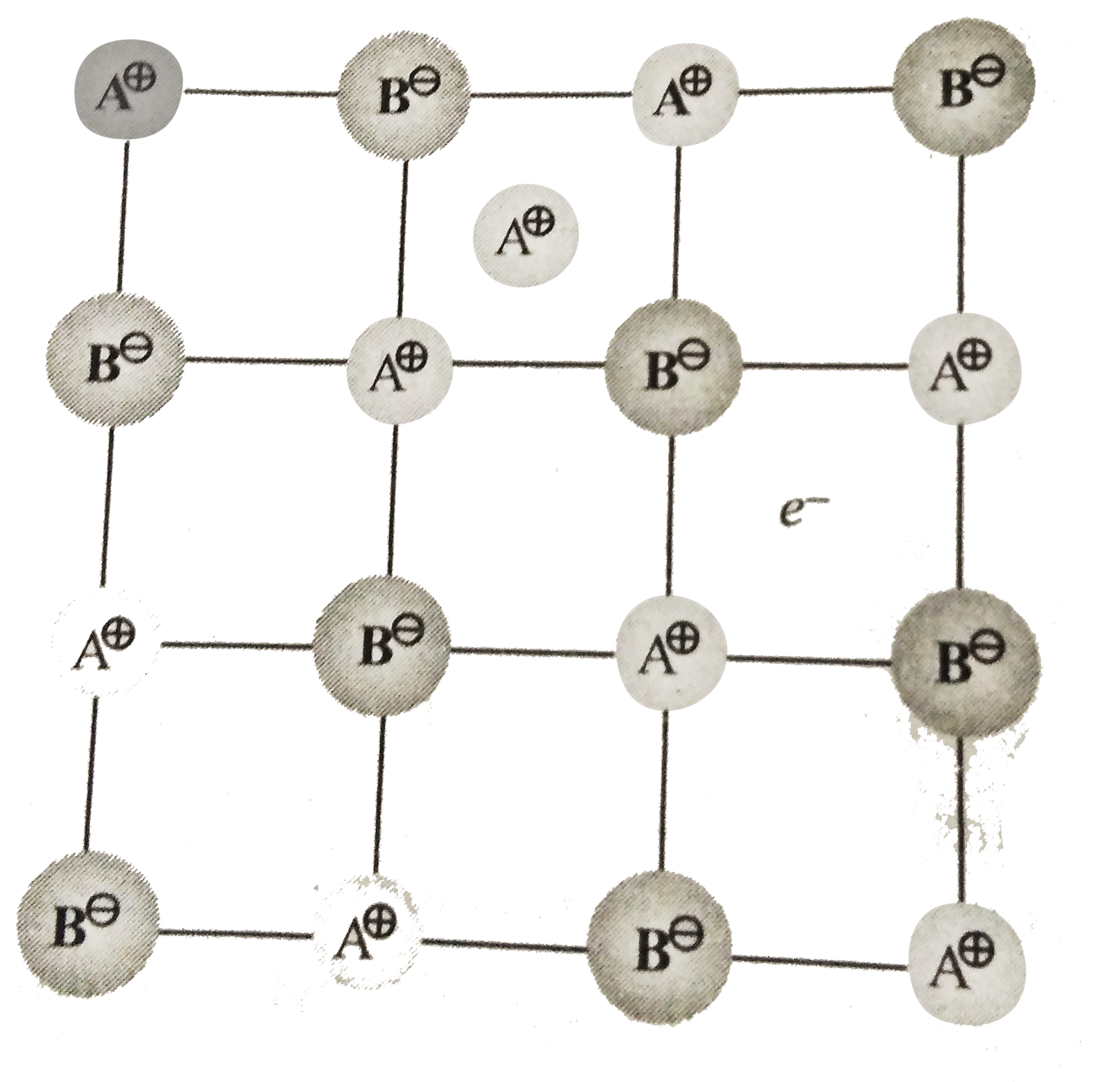Ex 1.1 (Objective) from CENGAGE CHEMISTRY (HINGLISH) SOLID STATE for Class 12
| Class 12 | CHEMISTRY |
| Chapter | SOLID STATE |
| CENGAGE CHEMISTRY (HINGLISH) | Ex 1.1 (Objective) |
| Medium | English |
| Academic Year | 2023-2024 |
Question 4
The OLIVINE series of minerals consists of crystal in which Fe2+ and Mg2+ ions may substitute for each other causing susbstitutional impurity defects without changing the volume of unit cell. In OLIVINE series of minerals, O2− ions exist as fcc with Si4+ occupying one-fourth of OVs and divalent metal ions occupying one-fourth of OVs and divalent metal ions occupying one-fourth of TVs. The density of "forsterite" (magnesium silicate) is 3.21gcm−3 land that of "fayalite" (ferrous silicate) is 4.34gcm−3.
The formula of "fayalite mineral" is View SolutionQuestion 5
The OLIVINE series of minerals consists of crystal in which Fe2+ and Mg2+ ions may substitute for each other causing susbstitutional impurity defects without changing the volume of unit cell. In OLIVINE series of minerals, O2− ions exist as fcc with Si4+ occupying one-fourth of OVs and divalent metal ions occupying one-fourth of OVs and divalent metal ions occupying one-fourth of TVs. The density of "forsterite" (magnesium silicate) is 3.21gcm−3 land that of "fayalite" (ferrous silicate) is 4.34gcm−3.
If in "forsterite mineral" bivalent Mg2+ ions are to be replaced by unipositive Na⊕ ions, and if Na⊕ ions are occupying half of TVs inf lattice, the arrangement of rest of the constituents is kept same, then the formula of the new solid is:View SolutionQuestion 10
AX,AY,BX, and BY have rock salt type structure with following internuclear distances:
∣∣ ∣ ∣ ∣ ∣ ∣ ∣∣SaltAnion-anionCation-aniondistance inÅdistance inÅAX2.401.70AY1.631.15BX2.661.88By2.091.48∣∣ ∣ ∣ ∣ ∣ ∣ ∣∣
A salt MY crystallizes in the CsCl structure. The anions at the corners touch each other and cation is in the centre. The radius ratio (r⊕/rΘ) for this structure isView SolutionQuestion 11
In a unit cell, atoms (A) are present at all corner lattices, (B) are present at alternate faces and all edge centres. Atoms (C) are present at face centres left from (B) and one at each body diagonal at disntance of 1/4th of body diagonal from corner.
Formula of given solid is View SolutionQuestion 12
In a unit cell, atoms (A) are present at all corner lattices, (B) are present at alternate faces and all edge centres. Atoms (C) are present at face centres left from (B) and one at each body diagonal at disntance of 1/4th of body diagonal from corner.
A tetrad axis is passed from the given unit cell and all the atoms touching the axis are removed. The possible formula of the compound left is View SolutionQuestion 13
In a unit cell, atoms (A) are present at all corner lattices, (B) are present at alternate faces and all edge centres. Atoms (C) are present at face centres left from (B) and one at each body diagonal at disntance of 1/4th of body diagonal from corner.
Total fraction of voids occupied areView SolutionQuestion 54
In a hypothetical solid, C atoms are found to form cubical close-packed lattice. A atoms occupy all tetrahedral voids and B atoms occupy all octahedrals voids.
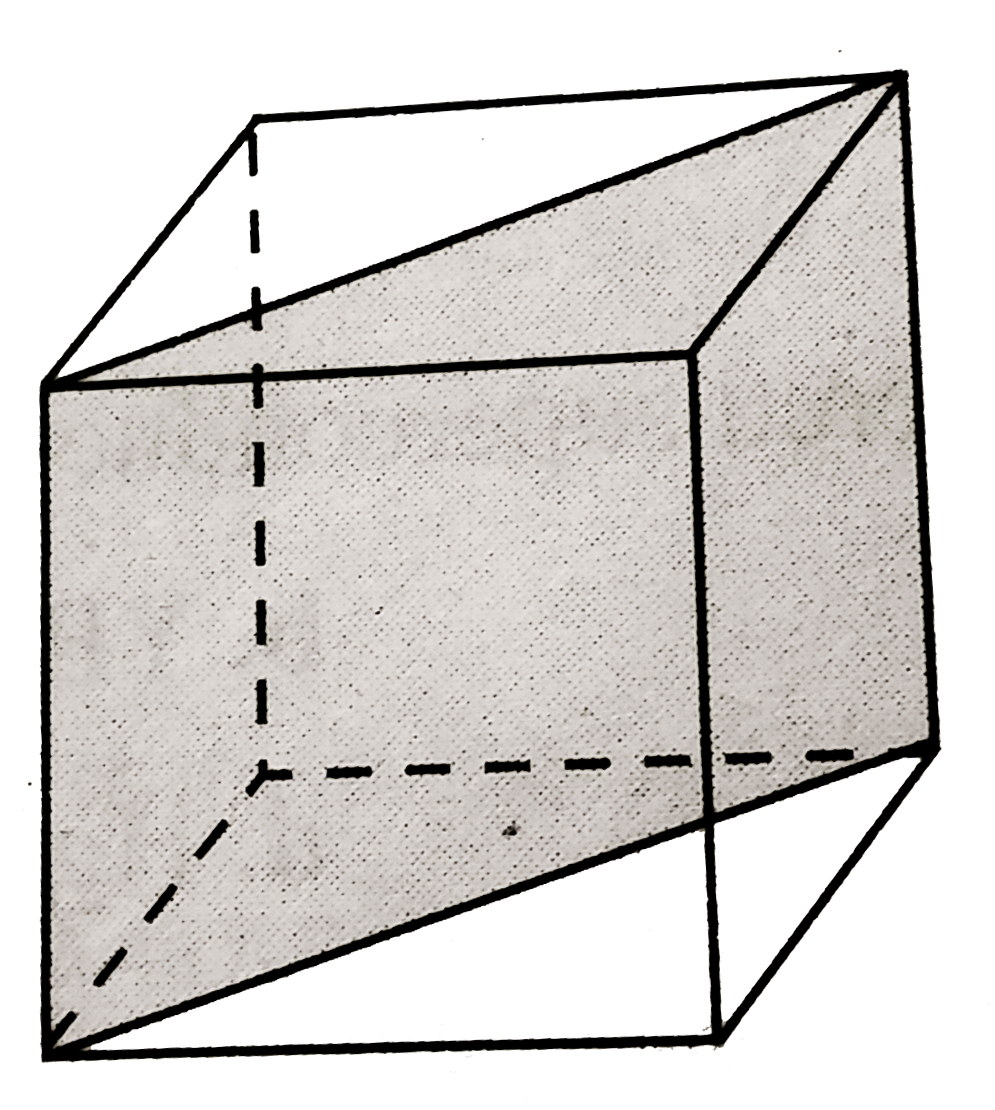
A and B atoms are of appropriate size, so that there is no distortion in the p lattice of C atoms. Now if a plane as shown in the following figure is cut, then the cross section of this plane will look likeView SolutionQuestion 55
What is the maximum number of layers of atom in close-packed planes that will lie within two imaginary parallel planes having a distance between them of 13√23r (where r is the radius of atom) in the copper crystal (fcc)?
(Consider the atoms to be within the parallel planes if their centres are on or within the two parallel planes).View SolutionQuestion 134
Assertion (A) : Non-stoichiometric compounds are called Bertholide compounds. NaCl and KCl crystal, when heated in an atmosphere of Na and K varpours, respectively, they impart violet and yellow colours to NaCl and KCl, respectively.
Reason (R ) : Metal excess defect is due to the presence of extra cations atg the interstitial sites. The excess metal ions move to the interstitial sites and the electrons to the neighbouring sites. The colour results byt the excitation of these electrons by absorbing suitable energy from visible light. When the excited electroon comes back to the ground state, there is emission of radiation in the visible region and gives complimentary colour.View SolutionQuestion 144
If a solid A⊕Bɵ having ZnS Structure is heated so that the ions along two of the axis passing throgh the face centre particles are lost and bivalent ion (Z) enters herre to maintain the electrical neutrality, so that the new formula unit becomes AxByCc, report the value of x+y+c. View SolutionQuestion 145
Metal M of radius 50nm is crystallized in f type and made cubical crystal such that face of unit cells aligned with face of cubical crystal. If the total number of metal atoms of M at all faces of cubical crystal is 6×1030, then the area of one face of cubical crystal is A×1016m2. Find the value of A.View SolutionQuestion 148
A bcc lattice is made up of hollow spheres of B. Spheres of solids A are present in hollow spheres of B. The radius of A is half of the radius of B. The ratio of total volume of spheres of B unoccupied by A in a unit cell and volume of unit cell is A×π√364. Find the value of A.View SolutionQuestion 152
A solid has a structure in which X atoms are located at cubic corners of unit cell, O atom are at the edge centres and Y atoms at cube centre.
Then the formula of compound is XaYbOc
If two atoms of O missing from any of two edge centres per unit cell, then the molecular formula is XaYbOz. Then, find the value of (x+y+z)−(a+b+c).View SolutionQuestion 187
In a hexaonal system system of cycstals, a frequently encountered arrangement of atoms is described as a hexagonal prism. Here, the top and bottom of the cell are refular hexagons, and three atoms are sandwiched in between them. A space-cilling model of this structure, called hexagonal close-paked is constituted of a sphere on a flat surface surrounded in the same plane by six identical spheres as closely as possible. Three spherres are then placed overt the first layer so that they toych each other and represent the second layer so that they toych each other and present the second layer. Each one of the three spheres touches three spheres of the bottom layer. Finally, the second layer is convered with a third layer identical to the bottom layer in relative position. Assume the radius of every sphere to be r.
The number of atom in this hcp unit cell isView SolutionQuestion 188
In a hexaonal system system of cycstals, a frequently encountered arrangement of atoms is described as a hexagonal prism. Here, the top and bottom of the cell are refular hexagons, and three atoms are sandwiched in between them. A space-cilling model of this structure, called hexagonal close-paked is constituted of a sphere on a flat surface surrounded in the same plane by six identical spheres as closely as possible. Three spherres are then placed overt the first layer so that they toych each other and represent the second layer so that they toych each other and present the second layer. Each one of the three spheres touches three spheres of the bottom layer. Finally, the second layer is convered with a third layer identical to the bottom layer in relative position. Assume the radius of every sphere to be r.
The voume of this hcp unit cell isView SolutionQuestion 189
In a hexaonal system system of cycstals, a frequently encountered arrangement of atoms is described as a hexagonal prism. Here, the top and bottom of the cell are refular hexagons, and three atoms are sandwiched in between them. A space-cilling model of this structure, called hexagonal close-paked is constituted of a sphere on a flat surface surrounded in the same plane by six identical spheres as closely as possible. Three spherres are then placed overt the first layer so that they toych each other and represent the second layer so that they toych each other and present the second layer. Each one of the three spheres touches three spheres of the bottom layer. Finally, the second layer is convered with a third layer identical to the bottom layer in relative position. Assume the radius of every sphere to be r.
The empty space in this hcp unit cell isView SolutionQuestion 209
You are given marbles of diameter 10mm. They are to be placed such that their centres are laying in a square bound by four lines each of length 40mm. What will be the arrangements of marbles in a plane so that maximum number of marbles can be placed inside the area? Sketch the diagram and derive expression for the number of molecules per unit area. View SolutionQuestion 215
A compound made up of elements A and B crystallizes in the cubic structures. Atoms A are present on the corners as well as face centres whereas atoms B are present on the edge centres centres as well as body centre. What is the formula of the compound? Draw the structure of its unit cell.View SolutionQuestion 220
The density of NH4Cl is 1.534gcm−3. It crystallizes in the CsCl lattice.
a. Calculate the length of the length of the edge of NH4Cl unit cell.
b. Calculate the shortest distance between a NH⊕4 ion and a Clɵ ion.
c. Calculate the radius of NH⊕4 ion if the radius of the Clɵ ion is 181 pmView SolutionQuestion 224
a. MgO has the structure of NaCl and TICI has the structure of CsCl . What are the coordiantion number of the ions in MgO and TICI?
If the closed-packed cations in an XY-type solid have a raidus of 73.2 pm, what would be the maximum and minimum sizes of the anions filling voids?
c. Fe2O3 (haematite) forms ccp arrangement of O2− ions with Fe3+ ions occupying initerstitial positions. Predict whether fe3+ ions are in the OV or TV. Given rFe3+=0.7Å and rO2−=1.4Å
d. A solid XY has CsCl-type structure. The edge length of the unit cell is 400± Calculate the distance of closest approach between X⊕ and Yɵ ions.View SolutionQuestion 244
The number of Schottky defects (n) present in an ionic compound containing N ions at temperature T is given by n=Ne−E/2KT, where E is the energy required to create n Schottky defects and K is the Boltzmann constant, If the mole fraction of Schottky defect in NaCl crystal at 2900K is X, then calculate −ln(x),
Given: ΔH of Schottky defect =2eV and
K=1.38×10−23JK−1
1eV=1.608×10−19JView SolutionQuestion 245
FeO crystallizes in NaCl-type of crystal lattice. The crystals of FeO are deficient in iron and are always non-stoichiometric. Some cationic sites are vacant and some contain Fe3+ ions but the combination is such that the structure is elctrically neutral. The formula approximates to Fe0.95O.
a. What is the ratio of Fe2+ to Fe3+ ions in the solid?
b. What percentage of cation sites are vacant?View Solution
All Exercises from CENGAGE CHEMISTRY (HINGLISH) Class 12 CHEMISTRY SOLID STATE
- EX 1.1 (OBJECTIVE)
- EX 1.1 (SUBJECTIVE)
- EX 1.2 (OBJECTIVE)
- EX 1.2 (SUBJECTIVE)
- EXERCISES (ARCHIVES ) ASSERTION-REASONING
- EXERCISES (ARCHIVES ) INTERGER
- EXERCISES (ARCHIVES ) LINKED COMPREHENSION
- EXERCISES (ARCHIVES ) MULTIPLE CORRECT
- EXERCISES (ARCHIVES ) SINGLE CORRECT
- EXERCISES (ARCHIVES ) SUBJECTIVE
- EXERCISES (ASSERTION-REASONING)
- EXERCISES (FILL IN THE BLANKS)
- EXERCISES (INTERGER)
- EXERCISES (LINKED COMPREHENSION)
- EXERCISES (MULTIPLE CORRECT)
- EXERCISES (SINGLE CORRECT)
- EXERCISES (TRUE/FALSE)
- EX 1.1 (OBJECTIVE)
- EX 1.1 (SUBJECTIVE)
- EX 1.2 (OBJECTIVE)
- EX 1.2 (SUBJECTIVE)
- EXERCISES (ARCHIVES ) ASSERTION-REASONING
- EXERCISES (ARCHIVES ) INTERGER
- EXERCISES (ARCHIVES ) LINKED COMPREHENSION
- EXERCISES (ARCHIVES ) MULTIPLE CORRECT
- EXERCISES (ARCHIVES ) SINGLE CORRECT
- EXERCISES (ARCHIVES ) SUBJECTIVE
- EXERCISES (ASSERTION-REASONING)
- EXERCISES (FILL IN THE BLANKS)
- EXERCISES (INTERGER)
- EXERCISES (LINKED COMPREHENSION)
- EXERCISES (MULTIPLE CORRECT)
- EXERCISES (SINGLE CORRECT)
- EXERCISES (TRUE/FALSE)
- EX 1.1 (OBJECTIVE)
- EX 1.1 (SUBJECTIVE)
- EX 1.2 (OBJECTIVE)
- EX 1.2 (SUBJECTIVE)
- EXERCISES (ARCHIVES ) ASSERTION-REASONING
- EXERCISES (ARCHIVES ) INTERGER
- EXERCISES (ARCHIVES ) LINKED COMPREHENSION
- EXERCISES (ARCHIVES ) MULTIPLE CORRECT
- EXERCISES (ARCHIVES ) SINGLE CORRECT
- EXERCISES (ARCHIVES ) SUBJECTIVE
- EXERCISES (ASSERTION-REASONING)
- EXERCISES (FILL IN THE BLANKS)
- EXERCISES (INTERGER)
- EXERCISES (LINKED COMPREHENSION)
- EXERCISES (MULTIPLE CORRECT)
- EXERCISES (SINGLE CORRECT)
- EXERCISES (TRUE/FALSE)
- EX 1.1 (OBJECTIVE)
- EX 1.1 (SUBJECTIVE)
- EX 1.2 (OBJECTIVE)
- EX 1.2 (SUBJECTIVE)
- EXERCISES (ARCHIVES ) ASSERTION-REASONING
- EXERCISES (ARCHIVES ) INTERGER
- EXERCISES (ARCHIVES ) LINKED COMPREHENSION
- EXERCISES (ARCHIVES ) MULTIPLE CORRECT
- EXERCISES (ARCHIVES ) SINGLE CORRECT
- EXERCISES (ARCHIVES ) SUBJECTIVE
- EXERCISES (ASSERTION-REASONING)
- EXERCISES (FILL IN THE BLANKS)
- EXERCISES (INTERGER)
- EXERCISES (LINKED COMPREHENSION)
- EXERCISES (MULTIPLE CORRECT)
- EXERCISES (SINGLE CORRECT)
- EXERCISES (TRUE/FALSE)
- ILLUSTRATION
- SOLVED EXAMPLES
- ILLUSTRATION
- SOLVED EXAMPLES
- ILLUSTRATION
- SOLVED EXAMPLES
- ILLUSTRATION
- SOLVED EXAMPLES


